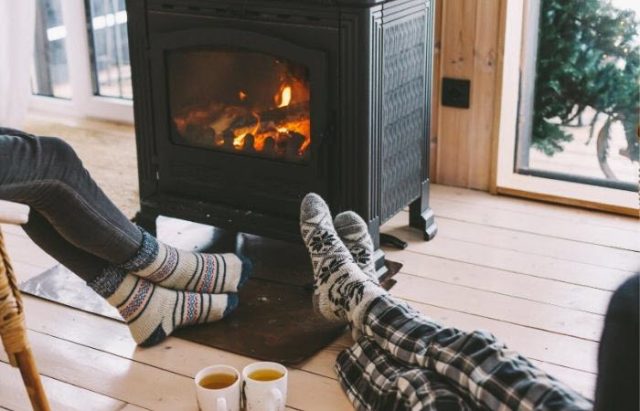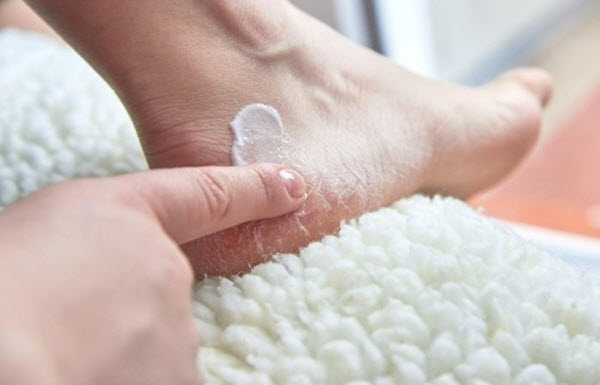7 Winter Foot Problems and Tips for Keeping Them At Bay

With winter just around the corner, most of us are already dreaming of long days spent on the slopes followed by leisurely evenings by the fireplace. Even if you aren’t planning to head off for a skiing or snowboarding weekend, there’s no denying the charm of watching snowflakes drift down from the sky while you’re toasty warm indoors!
Except, winter isn’t all cheer and joy. It brings its own fair share of trouble, especially for the feet. Practically everyone suffers some foot problem when the mercury drops, whether it’s a simple case of dry skin, or severe and painful chilblains, stiffness and even foot infections.
Why Are Foot Problems So Common In Winter?
Generally, we tend to take better care of our feet in summer because we’re walking around in open sandals or flip flops most of the time. When the weather gets colder, though, we slap on those heavy boots and forget all about how our feet look and feel. Out of sight, out of mind.
The trouble is, cold and dry weather aggravates your skin, and feet take the brunt of this change because they’re furthest from your core. They get less blood and oxygen than the rest of your body, and have no oil glands to keep skin moisturized. The skin on your feet is generally more prone to dryness, since it can only rely on sweat glands for moisture.
With dry skin and circulation problems come a host of foot-related issues such as inflammation, stiffness and neuropathy, which become even worse in cold weather. Wearing wet boots or the same pair of socks all day also raises the risk of infections such as Athlete’s foot and toenail fungus, unless you’re wearing antimicrobial copper socks.
Let’s look at common cold-weather foot complaints, as well as some of the most effective tips for relieving aches, boosting skin health and caring for your feet in winter.
Top 7 Foot Conditions People Face in Winter

Diabetics and the elderly usually suffer from foot issues in winter, but some complaints are common across all age groups and demographics. These include:
1. Dry Feet
Symptoms of dry feet include red, itchy, rough, flaky or peeling skin, as well as rashes, cracks and fissures. Dry feet may not seem like a serious problem, but leaving them untreated can cause numerous complications, including difficulty with movement or walking, pain, chronic burning or itching, and skin conditions such as psoriasis or dermatitis.
2. Chilblains
These itchy, red and swollen spots are a common complaint among people with circulation problems. They happen when your feet are exposed to sudden changes from cold to warm temperatures, which doesn’t allow blood vessels in the skin time to react. Chilblains usually show up on toes, and scratching them may cause cracks or ulcers.
3. Raynaud’s Phenomenon
This disorder of the blood vessels is very common in colder temperatures. The tightening of small blood vessels reduces blood and oxygen circulation in your extremities, leading to blisters, pain, discolored skin and even chilblains. The symptoms of Raynaud’s usually get worse when the temperature changes or drops suddenly.
4. Blisters
Friction from new or ill-fitting shoes often leads to blister development, even in summer. However, these irritating “bubbles” can also happen with comfortable footwear in winter, since you’re constantly wearing shoes and socks that rub against your skin. It’s also difficult to keep them from popping as a result of friction when you’re trying to stay warm!
5. Fungal/Bacterial Infections
When feet are enclosed in tight shoes or thick socks all day, they tend to get warm and sweaty. This creates the perfect environment for bacterial and fungal growth, especially between the toes and under toenails. If you’re heading to the gym instead of outdoors for exercise, you can also pick up germs from dirty floors.
6. Pinched Nerves/Neuromas
The nerve between your third and fourth toe can thicken due to excessive pressure from tight-fitting footwear, etc. It is usually treated with plenty of rest, foot elevation, ice packs, anti-inflammatory medication and a metatarsal pad placed beneath the ball of the foot. However, it also may require surgery or steroid injections in severe cases.
7. Bunions
Some people have a hereditary tendency to develop bunions, but these can also occur as a result of wearing shoes that are too tight, pointy or otherwise ill-fitting. Without proper care and padded footwear, bunions can become more severe and may even require surgical treatment. Chilblains are more common near bunions and calluses too.
Top 7 Tips for Preventing Winter Foot Problems

While regular foot care should be a part of your daily routine throughout the year, it’s even more important during the colder months. Here are 7 simple and effective ways to keep your feet healthy and prevent foot problems this winter:
1. Avoid sitting or standing too long
Long periods of sitting or standing are no good for your feet, and not only because they cause foot and ankle pain. Remaining in the same position for too long cuts off circulation to your legs and feet, which can lead to aches and pains, tired feet and legs, stiffness in the joints, edema or swelling in ankles and feet, as well as varicose veins and spider veins.
2. Wear copper compression socks
Wearing socks in winter is a good way to provide your feet with additional protection and warmth. Many people use compression wear to boost circulation in their legs, and copper compression socks are your best bet. In addition to graduated compression that enhances blood flow and keeps feet warm, copper infused compression socks also fight infection – and odor-causing bacteria, fungi and viruses, wick away extra sweat and boost skin health.
3. Keep your feet well-moisturized
Most winter foot problems occur due to dry skin, so it’s important to moisturize your feet regularly. After you bathe, shower or wash your feet, dry them thoroughly with a clean towel and use a thick, oil-based moisturizer to lock in moisture and keep the skin from drying out. Avoid using too much, or using harsh or scented products that can cause itching or inflammation, and don’t apply moisturizer between your toes.
4. Make sure you stay hydrated
We tend to drink less water in winter when we aren’t sweating in the heat. However, not drinking enough water is one of the main culprits behind skin dryness, in addition to numerous other health issues. Keep yourself well-hydrated by drinking at least 6-8 glasses of water every day, as well as clear soups or green tea, etc. Eating plenty of fresh fruits, veggies, and foods with omega-3s can also help skin hydration.
5. Don’t wear ill-fitting footwear
Always wear shoes that are comfortable, well-fitting and let your feet breathe, so your skin is not being rubbed raw when you walk around. Avoid footwear styles with a narrow or pointy front, which compresses your toes and increases the pressure on your feet while also reducing circulation. When you’re buying winter boots, try to find a pair that’s roomier than normal and you can wear thick socks without cutting off circulation.
6. Don’t rub or scratch your feet
If your feet and legs feel itchy, avoid scratching or rubbing them. This will only make the inflammation worse, and increase the risk of secondary infection by allowing dirt and germs to enter broken skin. Keep your skin moisturized and use an anti-itching lotion or ointment if necessary. Make sure to trim your toenails regularly after a bath or shower, since they can also damage your skin if they’re too long or sharp.
7. Try home remedies for problems
There are many ways to improve skin health at home, and even get relief from common foot problems. E.g., scrubbing your feet with a pumice stone after soaking them in warm water and Epsom salts can help relieve calluses and corns, while soaking them in water and baking soda can alleviate itchiness. Get a doctor’s opinion before trying any home remedies if you have serious skin conditions or other health issues such as diabetes.
Winter isn’t easy on your feet, but you can reduce the chances or severity of a problem with the right care. Make sure to get a checkup if you face serious or chronic issues, since timely treatment can keep them from getting worse!

